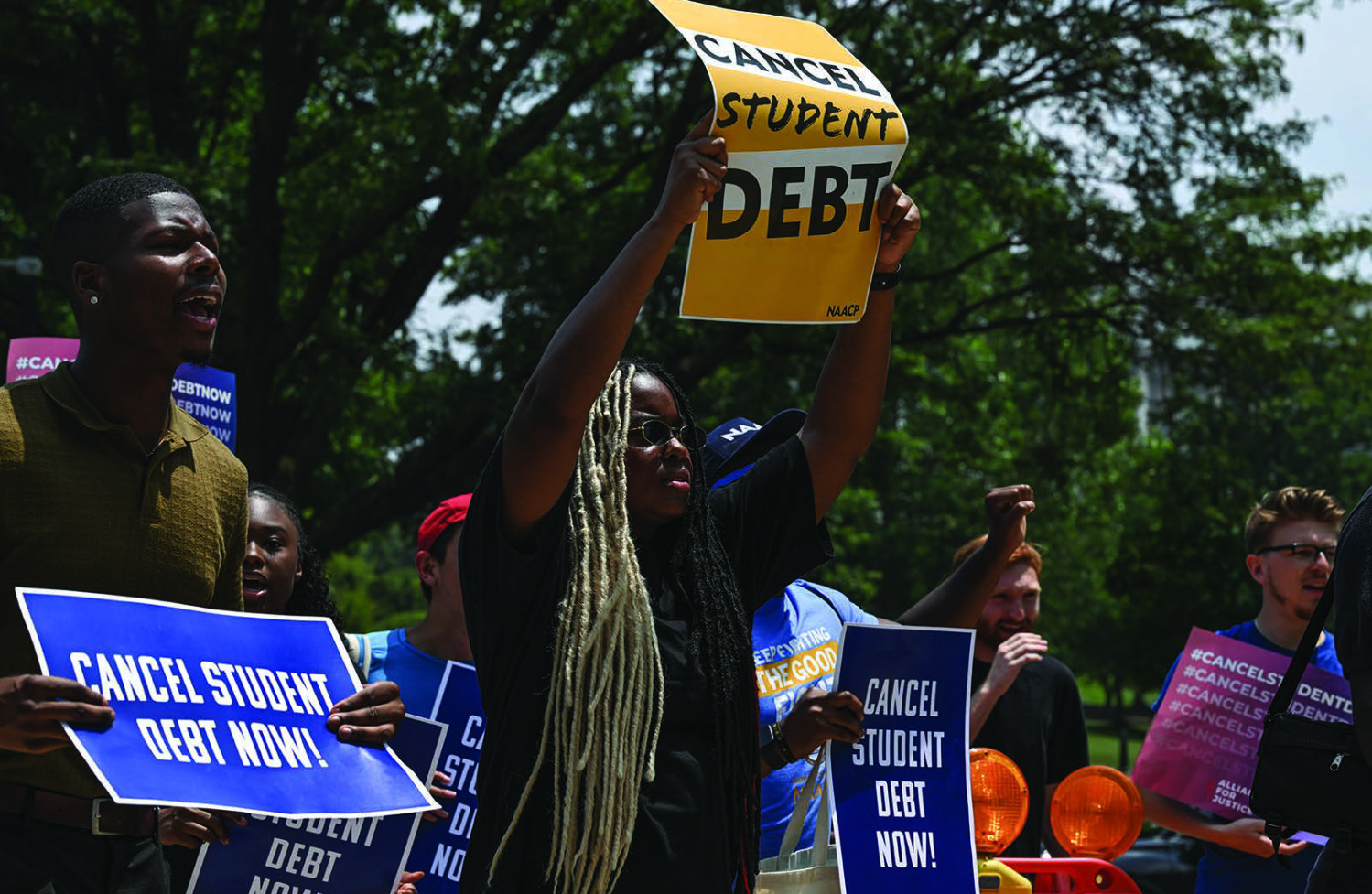
President Joe Biden arrives at Caen-Carpiquet Airport in France, en route to commemorative events around the 80th anniversary of D-Day on June 7.

Demonstrators in favor of canceling student debt march from the Supreme Court to the White House in Washington, June 30, 2023. President Joe Biden’s new student loan repayment plan was hobbled June 24 after federal judges in Kansas and Missouri issued separate rulings that temporarily suspended parts of the program known as SAVE, leaving millions of borrowers in limbo.
Like the income-driven repayment plans that came before it, the SAVE program ties borrowers’ monthly payments to their income and household size. After payments are made for a certain number of years, generally 20 or 25, any remaining debt is canceled.
SAVE also is intended to allow borrowers to exclude more of their earnings from their payment calculation, and to shorten the repayment period for borrowers with smaller loan balances.
The Missouri judge’s order blocks any new debt cancellation achieved through the SAVE program. But borrower advocates and student loan experts said this part of the ruling was ambiguous, and it was unclear how widely the provision should be interpreted.
An Education Department spokesperson said the agency was still reviewing the rulings.
SAVE also was to provide a shorter path to loan cancellation for enrollees with smaller loan balances. But that benefit will no longer work for those with debt remaining at the end of that abbreviated term — which may be as short as 10 years — now that the judge in Missouri has blocked forgiveness.
What components of SAVE will remain?
If you’re enrolled in SAVE, your payment appears unlikely to change for now.
The SAVE plan had already lowered payments because its formula lets borrowers keep more of their earnings to pay for basic needs, shielding it from the repayment formula.
As it stands, borrowers with undergraduate or graduate debt pay 10% of their income above that protected amount, or 225% of the poverty level. (That means single people who earn roughly $15 an hour or less will no longer need to make any payment at all.) Under the earlier REPAYE plan, borrowers paid 10% of income above 150% of the federal poverty guidelines. The more generous threshold remains.
The SAVE plan’s favorable treatment toward interest also appears to be unaffected by the court rulings for now. In other words, if a borrower’s monthly payment does not cover all of the interest owed that month, the Education Department will continue to waive the uncovered portion, preventing the debt from growing, at least for the moment.
“While we continue to review these rulings, the SAVE plan still means lower monthly payments for millions of borrowers,” Education Secretary Miguel Cardona said in a statement, “including more than 4 million borrowers who owe no payments at all, and protections for borrowers facing runaway interest when they are making their monthly payments.”
If you’re already enrolled in SAVE, you can remain enrolled and keep your current monthly payment, even if it’s $0 (which more than 4 million lower-income borrowers qualify for).
You can still enroll in SAVE if you haven’t already.
“While we are assessing the rulings, borrowers can still enroll in the SAVE plan,” the office of Federal Student Aid states on its website. “We will be sharing more information with borrowers soon.”
My loans were put in an administrative forbearance while my SAVE payment was adjusted. What happens now?
Millions of borrowers were set to have their loan payments reduced after the SAVE plan’s final provisions took effect July 1, but their loan servicers placed them in an administrative forbearance while it calculated those new monthly payments.
The federal judge in Kansas, Daniel D. Crabtree, said this month that only three states in the suit there — South Carolina, Texas and Alaska — had the legal standing to sue. And Crabtree declined to unwind the pieces of the SAVE plan that were already operational.
But in his order, he wrote that “a broad rule, like the SAVE plan, requires a broad injunction, given the compelling need for nationwide uniformity in the department’s administration of student loan programs.”
What does the Biden administration plan to do?
It clearly disagrees with the District Court decisions, noting that the Education Department has relied on its authority under the Higher Education Act three times in the past 30 years to introduce income-driven repayment plans.
“The Department of Justice will continue to vigorously defend the SAVE plan,” Cardona said in his statement.

